Week 5
Mineral and Vitamin Supplements |
 |
 |
Instructions for listening to audio clips
- Download the QuickTime
Player to listen to the audio files.
- Read the QuickTime
Instructions for installation help.
- Download the RealPlayer to listen to the audio files
- Instructions are on the RealPlayer download page
Macrominerals
Text Transcript
Follow along with the audio...
- In general, macrominerals added as supplements are Na, Cl, Ca, P,
Mg, K, and S
- Table 8-1 on page 168-169 of text Sources of mineral supplements
utilized in feed supplements, complete feeds, or mineralized salt
- Table 10.4 Various mineral sources with intermediate and high relative
bioavailability
Table 10.4 - Various Mineral Sources with Intermediate and High
Bioavailability
Mineral |
Source |
Bioavailability |
| Calcium |
Steamed bone meal
Monocalcium phosphate
Dicalcium phosphate
Defluorinated phosphate
Calcium carbonate
Ground limestone
Dolomite limestone |
High
High
High
Intermediate
Intermediate
Intermediate
Intermediate |
| Phosphorus |
Calcium phosphate
Phosphoric acid
Sodium phosphate
Steamed bone meal
Defluorinated phosphate
Dicalcium phosphate |
High
High
High
High
Intermediate
Intermediate |
| Magnesium |
Magnesium carbonate
Magnesium chloride
Magnesium oxide
Potassium and magnesium sulfate |
High
High
High
High |
| Potassium |
Potassium chloride
Potassium sulfate
Potassium and magnesium sulfate |
High
High
High |
| Sulfur |
Potassium sulfate
Potassium and magnesium sulfate
Sodium sulfate |
High
High
Intermediate |
| Cobalt |
Cobalt carbonate
Copper sulfate |
High
High |
| Copper |
Copper sulfate
Copper chloride
Copper carbonate
Copper nitrate |
High
High
Intermediate
Intermediate |
| Iodine |
Potassium iodide, stabilized |
High |
| Iron |
Ferrous sulfate |
High |
| Manganese |
Manganese sulfate
Manganese carbonate |
High
High |
| Selenium |
Sodium selenate
Sodium selenite |
High
High |
| Zinc |
Zinc carbonate
Zinc sulfate
Zinc chloride |
High
High
Intermediate |
- In addition, Na and Cl also supplemented
- Sodium chloride (NaCl)
- Most common supplement added to rations
- Figure 10.1 Salt
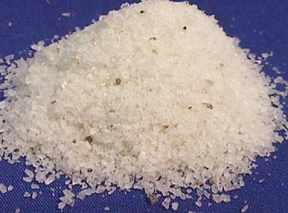
- Sodium and chlorine
- Pure sodium chloride
- Feeding
- Alone
- With additional components
- Nutritive and nonnutritive
- Salt functions as carrier
- Iodized salt
- Salt with iodine-containing compound added
- Trace-mineralized salt
- Salt with microminerals
- Common added include Co, Cu, Fe, I, Mn, and Zn
- S and Mg and limited amount of Se may be added
- Figure 10.2 Trace-mineralized salt
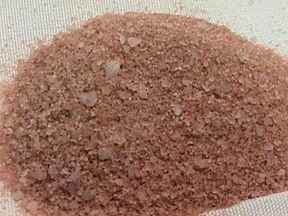
- Appropriate in number of production situations
- May pose issue is specific regions
- Analyze each specific production situation
- Examples of nonnutritive additives include antibiotics and
anti-bloating compounds
- For ruminants and horses
- Added to ration or offered ad-libitum
- Added to ration
- Fine in texture and free-flowing
- Ad-libitum
- Loose or as compressed block
- Form influenced by factors such as cost per unit,
climate, and competition for supplement
- Figure 8.4 on page 170 Example of feeder provides
loose salt protection from elements
- Figure 8-3 on page 170 Cattle consuming salt from
compressed block
- For poultry and swine, in general, added to ration
- Requirements
- Added to majority of animal rations
- Increase as fluid losses increase
- Examples of fluid loss: sweat and milk
- For ruminants and horses, increase consuming high K forages
- For ruminants and horses, in general, 0.5-1.0% added to commercial
formulas
- In addition, various supplements may contain 1.0-3.0%
- For poultry and swine, in general, feeds 0.25-0.50%
- Toxicity
- Excess is potential issue for all species
- Poultry and swine more susceptible
- Prevention, know relative contents of feedstuffs and water
and provide adequate water
- Attractive and palatable
- Animals expected to consume enough to at least meet Na and Cl
requirements
- Ca and P
- In general, supplementation required
- Contents in feedstuffs
- Forages
- Grains and similar concentrates
- Ca bioavailability similar across Ca sources
- P bioavailability varies between P sources
- Bioavailability of P
- Plant-based sources
- App. half of P is bound with phytic acid in phytate complex
- For monogastrics
- Phytin P relatively unavailable
- App. half of P available
- For ruminants
- Rumen microorganisms synthesize phytase
- Releases phytin P, making available
- Greater amount available
- Inorganic sources
- Also varies
- Well utilized include phosphoric acid, and mono, di, and
tricalcium phosphates
- Sources
- Dicalcium phosphate
- Common source of Ca and P
- Figure 10.3 Dicalcium phosphate
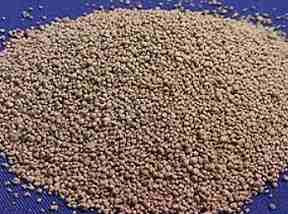
- Average composition 25-28% Ca and 18-21% P
- Also low in F
- Additional bone-based products
- Steamed bone meal, bone charcoal, spent bone charcoal, and
bone ash
- Figure 10.4 Steamed bone meal

- Contents of Ca and P vary
- In general, favorable sources of Ca and P
- Monocalcium phosphate
- App. 20% Ca and 21% P
- Favorable source
- Tricalcium phosphate
- App. 38% Ca and 18% P
- Favorable source
- Defluorinated phosphate
- Figure 10.5 Defluorinated rock phosphate
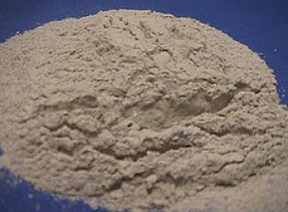
- Average P 14%
- Bioavailability favorable
- Phosphoric acid
- Average P 23-25%
- Bioavailability high
- Often added to liquid supplements for ruminants
- Ammonium phosphate
- Produced by treating phosphoric acid with ammonium
- Monoammonium and diammonium
- Source N for ruminant species
- Minimum N
- Monoammonium: 9%
- Diammonium: 17%
- As source of N, maximum inclusion rate at point product
provides 2% of total ration CP
- Phosphorus
- Monoammonium: 25%
- Diammonium: 20%
- Mono and disodium phosphate
- Favorable bioavailability
- Various sources of calcium carbonate and calcium sulfate
- Calcium carbonate
- Limestone and oyster shells
- Figure 10.6 Ground limestone
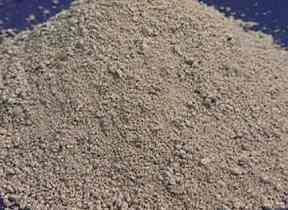
- Calcium sulfate
- Source of S
- S essential for MCP synthesis of sulfur-containing amino
acids
- Dolomite limestone
- Contains at least 10% Mg
- Bioavailability low for some species
- In general, favorable sources of Ca
- Mg
- In general, supplementation required
- Sources
- Magnesium oxide is preferred source
- Mg content 54-60%
- Favorable bioavailability
- Magnesium carbonate
- Mg content 21-28%
- Favorable bioavailability
- Magnesium sulfate
- Mg content 10-17%
- Favorable bioavailability
- K
- In general, required for ruminants on high-concentrate rations
and for monogastrics
- Sources include potassium chloride, sulfate, and carbonate
- Content and bioavailability favorable
- S
- In general, supplemental sulfur required for ruminants, especially
consuming NPN compounds
- Favorable sources include potassium sulfate and magnesium sulfate
- Elemental S may also be added
- To fulfill S requirements of monogastrics, feed sulfur-containing
proteins
|
 |
 |
|








